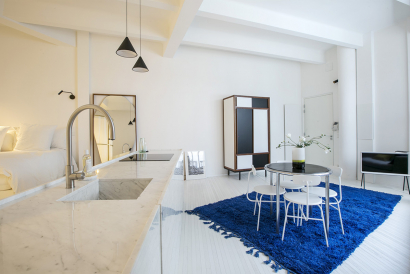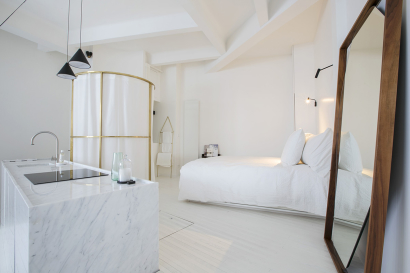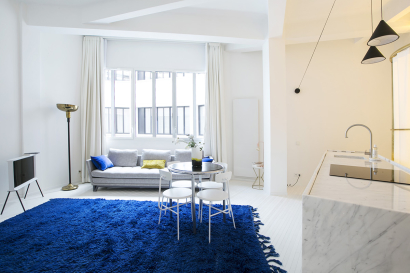We head to the trendy neighbourhood of the Canal Saint-Martin, to discover a 44 square metre (470 sq. ft.) studio in a former industrial building. The owners, Nelly Cauliez and Lénaïc Noury, spared no expense with the furnishings – high-quality materials and vintage furniture make this apartment a work of art.
Could you tell us a bit about the building’s history?
The building is from 1934, designed by Leon Schneider who created a truly exceptional façade, quite similar to the old Samaritaine department store on the Seine in Paris. In fact, the resemblance is what gave Schneider’s building its name: La petite Samaritaine.
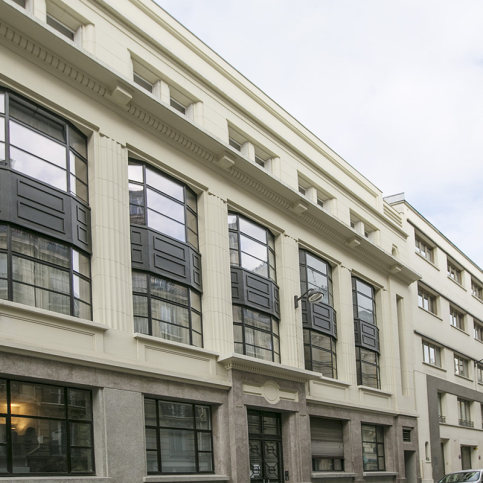
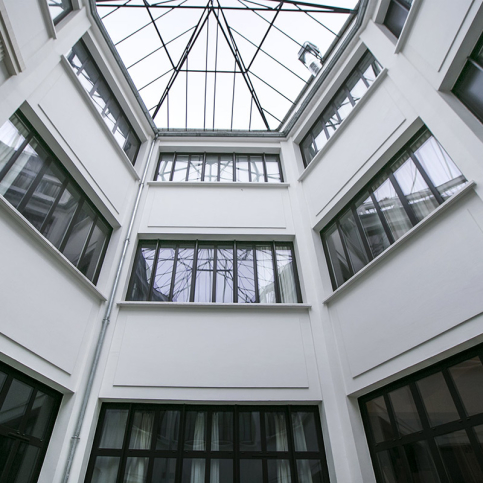
The building features large bay windows and an atrium in the centre. For many years the building housed a shoemaking materials business, and it was entirely renovated in 2015. Although it was a semi-industrial building, it kept its art-deco era façade, as well as several architectural elements such as a magnificent metal handrail.
What inspired you most when decorating this apartment?
We decided to work with an architect for the whole project: from room design to layout, then the interior design and choice of furniture. We wanted to keep as much light as possible while respecting the existing spaces, without dividing them up too much. The grid of metallic beams and the height of the ceiling (3.6 metres) were some of the key elements that inspired us. We designed the space like a little loft, using the ceiling beams to influence the layout of the space below.
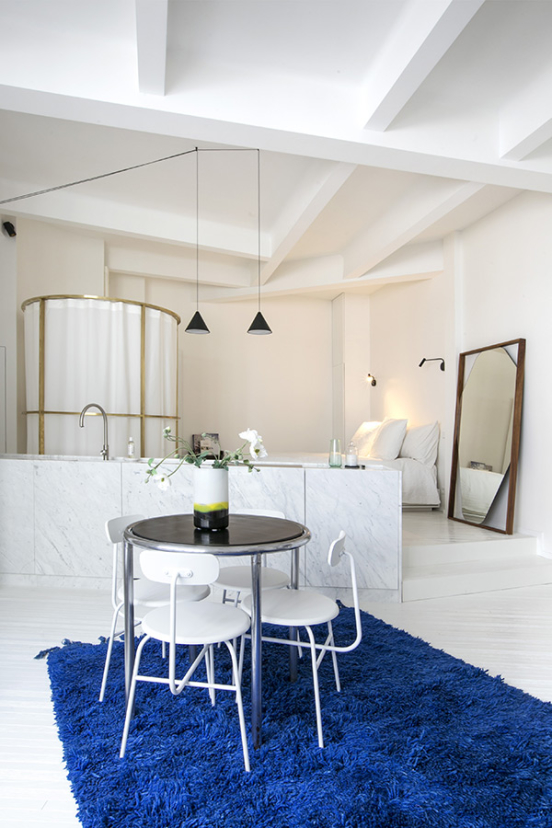
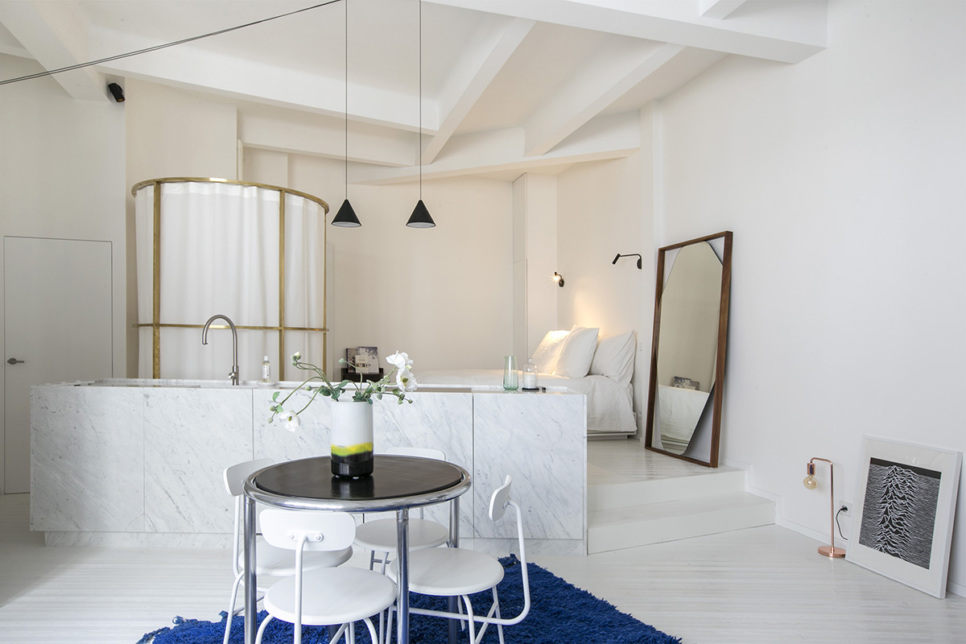
What materials do you work with most and which ones do you prefer to work with?
We created a blend of warm materials such as the custom-fit wooden flooring from Oscar Ono and high-quality fine materials such as marble and even brass. The wooden floor alternates white matt boards with varnished boards. The light reflected from the alternating beams creates a form of visual resonance. The fact that the boards are laid diagonally accentuates this effect. The entire kitchen is a single block of Carrara white marble, which we chose in harmony with the light-filled space. The veins in the marble create a parallel with the vibrancy of the wooden floor. The shower, a perfectly geometrical column, is made from a brass structure and a white, custom-made curtain. Hints of brass appear sparingly throughout the space, creating the impression of being inside a jewel where the white walls of the apartment are its case.
We also played on the light that comes through the shower curtain, as well as through the long white curtain that hides a dressing table. These function as opalescent light boxes, of sorts.
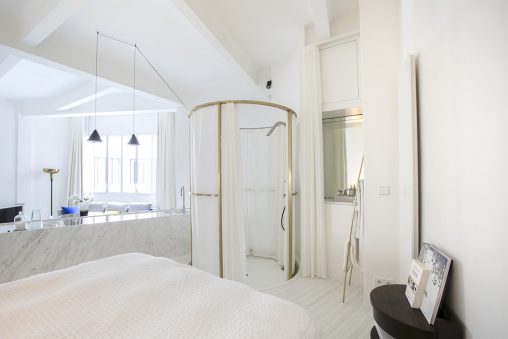
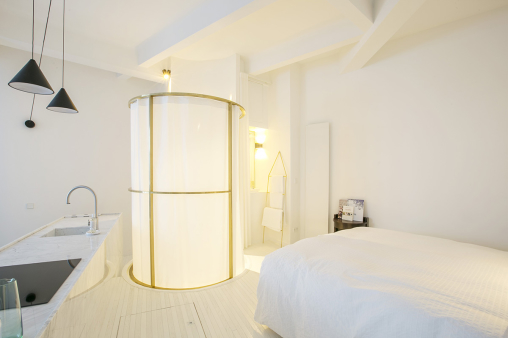
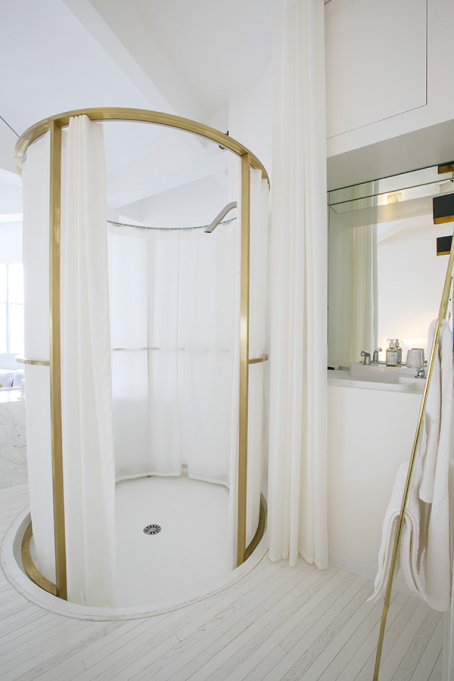
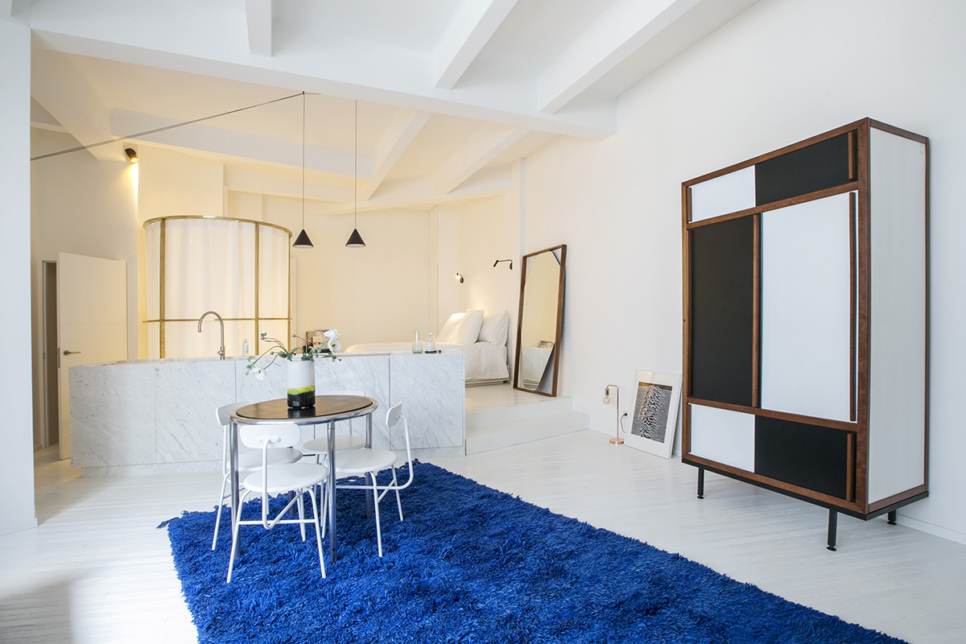
What are your favourite items in this apartment?
We really fell in love with the wardrobe by André Sornay, a designer from the 1950s. In this very pared-down space, each piece of furniture stands out, so we had to choose them really carefully. We were also looking for a practical wardrobe with plenty of storage space. This wardrobe, found at an antiques shop in Franche-Comté, was originally in a boarding school dormitory before it was restored. It has a section for shoes, a clothes rail, and plenty of shelves. It makes great use of space. The black and white gives a very graphic style to the apartment, contrasting with the white floor and the kitchen block, and corresponds nicely with the ceiling design. The second thing we loved was the electric blue rug by Beni M’Guild. It’s another vintage find from Paris Berbère, from 1970. It’s big and thick and adds another note of warmth in harmony with the rest. It also reflects my own Moroccan origins.
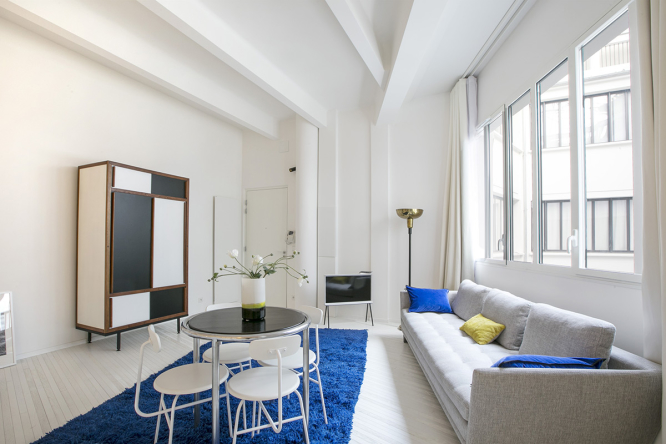
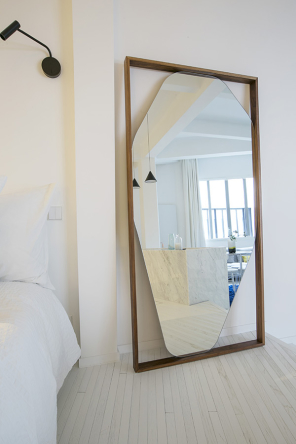
Where do you usually go bargain-hunting?
Lots of the pieces were bought at Pamono or even Proantic, like the nightstand, and a metal table that both date to 1930; there’s also a brass lamp from 1960. We also selected contemporary pieces at Rochebobois, Ligne Roset for the sofa and the Belize mirror by Japanese designer Kensaku Oshiro, but also at Thonet Vienna for the Nicola Gallizia armchair that we had reupholstered in saffron yellow.
What is your favourite thing about this neighbourhood? Can you recommend a few places?
So obviously the best thing is how close it is to the Canal Saint-Martin, 50m away. Rue Lucien Sampaix is also very lively, with lots of shops and good restaurants. The best one is the restaurant Les Vinaigriers: simple but delicious dishes, everything is homemade and it’s really great. We also love Liberté bakery, which on top of its famous pastries and cakes, plays great music while you wait to order!
Nelly Cauliez & Lénaïc Noury’s shopping guide
Paris Berbère
Vintage and contemporary Moroccan Berber rugs
62 Rue Crozatier, 75012
01 43 43 48 12
Ligne Roset
High-end contemporary furniture
Rochebobois
Designer decoration, furniture and sofas
Gebrüder Thonet Vienna
Unique furniture, blending traditional with innovative
Pamono
Designer objects for a life less ordinary
Proantic
Antique pieces and art objects presented by professional antique dealers
Oscar Ono
Designer business specialised in high-end custom-made wooden flooring
Les Vinaigriers
Neo-bistrot
42 rue des Vinaigriers, 75010
01 46 07 97
LIBERTÉ
Bakery and patisserie with a tea room in a refined décor
39 rue des Vinaigriers, 75010
01 42 05 51 76
